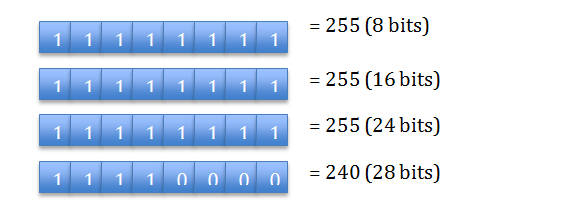Part 3 of 5: Introduction to Networking – Subnetting
- Megan
- Latest News
- 0 likes
- 4809 views
- 0 comments
In our previous blog post, Part 2 of 5: Introduction to Networking, we discussed assigning IP addresses to hosts using the different Classes of Network Addresses, such as Class A, B and C.
Another important factor in networking is using subnetting, where to use it and how it works.
Subnetting is a principle applied to segment a large, single network, into smaller, logical sub-networks or subnets. An IP address is made up of a network segment and a host segment. A subnet is designed to accept bits from the IP Address’s host segment, and by using these bits, assign a number of smaller sub-networks inside the original network.
Subnets were initially designed for solving the shortage of IP addresses over the Internet.
Each IP address consists of a subnet mask and all the class types, A, B and C network addresses include a subnet mask, also known as default subnet mask:
- Class A: 255.0.0.0
- Class B: 255.255.0.0
- Class C: 255.255.255.0
By using subnets to divide a large network into smaller sub-networks, you gain the following benefits in your network:
- Reduces the network traffic by reducing the volume of broadcast
- It helps to surpass the constraints in a Local Area Network (LAN), for example, the maximum number of permitted hosts
- Enables users to access a work network from their homes, as there is no need to open the complete network.
Classless inter-domain routing or CIDR:
CIDR is the method that you as the network administrator would use to assign a block of available host IP addresses, for example 192.168.10.32/28. This tells you what your subnet mask is and the slash notation tells you how many bits are turned on.

So, for the IP Address of 192.168.10.32, the subnet will be 255.255.255.240.
The number of valid hosts is 14 as you only have 4 bits in the host segment, i.e. 16 possible host addresses – 2 for a broadcast address, so you valid host IP address range will be 192.168.10.32 to 192.168.10.47.
Refer to the table below for Subnets and CIDR values

With this in mind, CIDR values from /8 to /15 can be used with a Class A network address. The CIDR values from /16 to /23 can be used for both Class A and Class B network addresses and /24 and /30 can be used for Class A, B and C network addresses.
Alternatively, there are many free to use, online IP address and Subnet calculators that you can use that will indicate the IP Address, the Subnet as well as the /CIDR value and the viable Host IP Address Range.
In our following blog post, we will cover some of the basic routing principles that you might use in your IP Network.


Comments
View Comments